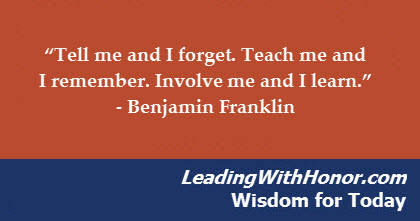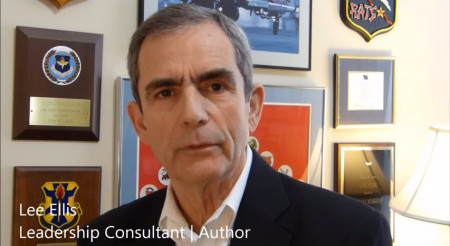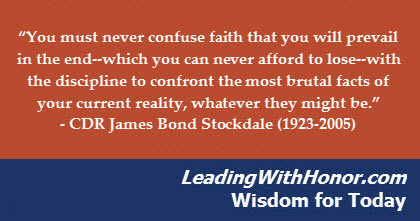Lee Ellis's Blog, page 281
February 26, 2016
Leading with Honor Wisdom for Today, February 26, 2016
February 25, 2016
Living in the Tension of Change and Growth – 3 Ways to Challenge Your Mindsets
Looking for a change in the way that you do work and life? Often a change in perspective and the willingness to accept and live in paradox is the only way to do it. Be willing to live in the tension—holding two seemingly opposite concepts at once (such as being tough yet compassionate, or strong yet vulnerable).
Here are 3 tips –
Try a Picture-in-Picture Approach.
My friend, Laurie Beth Jones, has a good analogy called the “picture-in-picture” approach. We must learn to keep more than one channel on the screen and be able switch between them. For example, a leader needs to be able to expand the “vision” onto the full screen in order to develop strategy while at the same time keeping the practical details of reality in the smaller background screen, knowing she’ll need to swap pictures again to deal with the here and now.
Develop flexibility in yourself and others.
Push yourself to identify old mindsets that really aren’t working. When notice that your actions don’t seem to bring good results, consider taking a new perspective. As you get older, flexibility gets harder but it’s worth the effort. Share your growth and mentor others to do the same.
Remember the Stockdale Paradox.
Leaders need resilience in tough times. Our POW leader, CDR James Bond Stockdale, the senior Naval officer in the camps knew a lot about resilience—spending more than four years in solitary confinement, two years in the infamous Alcatraz camp with many rounds of torture.
The “Stockdale Paradox” says – “You must never confuse faith that you will prevail in the end — which you can never afford to lose — with the discipline to confront the most brutal facts of your current reality, whatever they might be.”
>>>Want to read the entire article on this topic? Read Now! <<<
Please share your wisdom and personal experiences on this topic, too – thank you!


February 24, 2016
The Latest Recommendation from Lee’s Bookshelf – “Extreme Ownership” – Read More
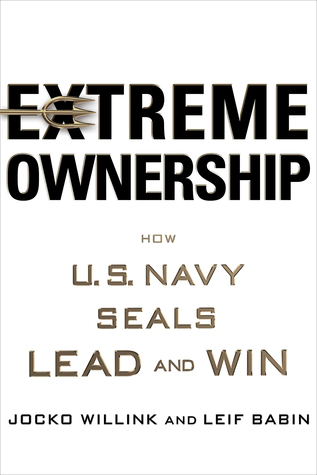 The Latest Recommendation from Lee’s Bookshelf – “Extreme Ownership: How U.S. Navy SEALs Lead and Win”.
The Latest Recommendation from Lee’s Bookshelf – “Extreme Ownership: How U.S. Navy SEALs Lead and Win”.
Sent to the most violent battlefield in Iraq, Jocko Willink and Leif Babin’s SEAL task unit faced a seemingly impossible mission: help U.S. forces secure Ramadi, a city deemed “all but lost.” In gripping firsthand accounts of heroism, tragic loss, and hard-won victories in SEAL Team Three’s Task Unit Bruiser, they learned that leadership—at every level—is the most important factor in whether a team succeeds or fails.
Read more about this special book, and if you’ve read this week please share your comments!


February 23, 2016
Choose One – “Even though both are important, I’m naturally good at focusing on (Results or Relationships) in leadership.”
Choose One – “Even though both are important, I’m naturally good at focusing on (Results or Relationships) in leadership.”
Please share your answer in this post – thank you!


February 21, 2016
On This Day in Leadership History, February 21, 2016
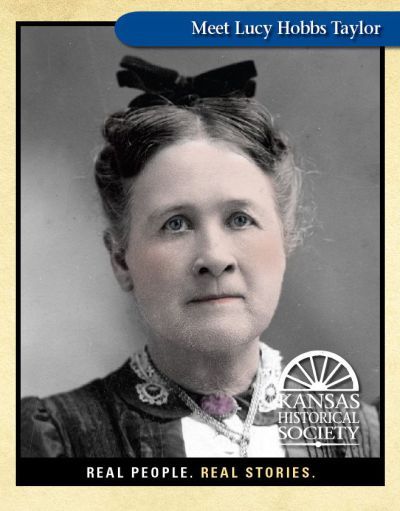 On this day in leadership history in 1866, Lucy B. Hobbs became the first woman to graduate from a dental school. The school was the Ohio College of Dental Surgery in Cincinnati.
On this day in leadership history in 1866, Lucy B. Hobbs became the first woman to graduate from a dental school. The school was the Ohio College of Dental Surgery in Cincinnati.
Regardless of the challenges and obstacles, focus on your natural talents and passion and align it with your work. You’ll have a much greater chance for happiness and fulfillment, and those around you will appreciate it too!
Lucy Hobbs Taylor – Wikipedia


February 20, 2016
Dozens of People Are Signing Up for Coaching – See Inside
Dozens of people each month sign up for Lee Ellis’ ‘Leading with Honor’ Monthly Coaching Clips! See what’s it’s all about, and register free to receive it in your inbox. If you already receive it and like it, tell us about it – thank you!
Click for your Free Registration


February 19, 2016
Leading with Honor Wisdom for Today, February 19, 2016
“You must never confuse faith that you will prevail in the end — which you can never afford to lose — with the discipline to confront the most brutal facts of your current reality, whatever they might be.” – CDR James Bond Stockdale (1923-2005)


February 18, 2016
Coaching Moment – Telling the Truth Even When it’s Difficult
We’ve all been in a pressure point where a lie would be easier than the truth. In this quick 3-minute clip, Lee talks direct to all leaders about the long-term value of telling the truth even when it’s difficult. Watch this pep talk, and please share with others!
Read the article on this topic


February 17, 2016
How to Assess Your Leadership OCQ (Organizational Cultural Intelligence)
 By John Purcell, Consultant and Leadership Behavior DNA Certified Advisor
By John Purcell, Consultant and Leadership Behavior DNA Certified Advisor
Why does the culture of your organization matter? It matters to the extent that it is supporting or holding you back from being all you can be, solving a critical problem, or taking advantage of an important opportunity.
Let’s coin the term OCQ to stand for Organizational Cultural Quotient or Intelligence, which is the capacity to understand your organization’s culture and to continuously hone and focus the culture to maximize its positive impact on your organizational effectiveness.
What’s your OCQ? How Would You Develop It?
Just to remind you what exactly we are talking about when we say organizational culture, let’s use John Kotter’s simple definition:
group norms of behavior and the underlying shared values that help keep those norms in place.
But culture is complex, and it can involve multiple layers of sub-cultures in different groups, functions, and locations within the organization. These norms and values matter because they exert both positive and negative forces on what you are trying to accomplish in your organization. And changing any of these will be somewhere between very difficult, if your OCQ is high, and impossible otherwise.
The Timing of OCQ Assessment
The time to do cultural work is when you are facing a crucial challenge or opportunity, and the work starts with Cultural Assessment and eventually moves to Cultural Modification.
I have explained in previous articles that Cultural Assessment includes naming your “real” core values along with your accidental (unintentional and possibly negative) values. You can begin this process by evaluating the many behaviors and even symbols that are widely accepted, what Edgar Schein calls your “artifacts,” then comparing those with your espoused values, identifying the gaps, and finally digging into the shared assumptions that are behind those gaps.
How does this all fit into your normal Strategic Planning process? There are 4 primary steps –
1. My approach to Strategic Planning starts with assessing alignment with your Business Plan by doing a “Mission Gap Assessment,” which is simply asking how effective you are in each element of your mission. A Cultural Gap Assessment can actually fit very nicely into this process.
2. The next part of strategic planning is to brainstorm ways you can close the gaps between your mission and your actual outcomes. Adding culture to this picture, you can do the same with the gaps you have found between your espoused values and your shared assumptions.
3. The next step in strategic planning is to determine which of all of the potential actions should become the “Big Rocks” that you will focus on right now. If the Cultural Modification area rises to this level, then this becomes a part of your Strategic Plan. But be very careful here. You are not going to be able to change multiple aspects of an organizational culture, so select the narrow aspect of the culture that is blocking you from your desired outcome (problem or opportunity). Putting this all together, the overall pathway looks like this:
Business Plan >> Mission Assessment + Cultural Assessment >> Strategic Plan (including Cultural Modification)
4. Now we come to the very hardest part, which is shaping this cultural Big Rock into a plan and executing that plan to actually lead to Cultural Modification. One of your greatest assets to changing a cultural behavior will be other cultural behaviors that are more supportive of your desired outcome. How can you leverage those to change the one area that must change?
But there’s a formula you will have to satisfy, according to Edgar Schein: Survival Anxiety will have to be greater than Learning Anxiety. Survival Anxiety comes from a threat, risk, or opportunity that requires the cultural change, and Learning Anxiety comes from fear of incompetence, loss of identity or social group, etc. And it’s critical that you achieve this status by decreasing the Learning Anxiety and not by increasing the Survival Anxiety. In all, change we must take the emotions of those involved into account, but in the case of cultural change, it’s probably even more critical.
Applying This Strategic Process
I recently experienced all of this while facilitating strategic planning with a non-profit organization. The incentive for the planning was CEO succession and the desire to become a healthier organization in order to attract an excellent new leader. Three potentially harmful cultural issues were uncovered, and the one selected as a Big Rock was in the area of leadership communications (not following organizational channels, going around others’ backs, and negative talking). The negative impact was explained and discussed, a leadership behavior document was drafted, voted on, and approved, and key leaders all are signing the document from that point forward. As of this date, it has been tested and affirmed, but real cultural change will take that happening many, many times over.
So how is your OCQ? If you follow these steps, it could climb significantly. Please share your comments and experiences in this forum.
JP
**The preceding thoughts come from my work with organizations, multiple articles and books on culture, and especially a helpful book called The Corporate Culture Survival Guide by Edgar Schein.
About John Purcell
John is an organizational health coach, helping leaders and their organizations to be more transformational through courageous leadership, cohesive teams, effective boards, aligned strategy, and focused execution. He is also a certified facilitator and advisor with Leadership Behavior DNA. Learn more about John.
Special Offer
 Assess you and your team’s leadership strengths and struggles to maximize employee engagement using behavioral assessment and training services from Leadership Behavior DNA. Learn more and download a sample report.
Assess you and your team’s leadership strengths and struggles to maximize employee engagement using behavioral assessment and training services from Leadership Behavior DNA. Learn more and download a sample report.


February 16, 2016
How to Be Vision-Driven and Practical – Operating in Paradox
 Think about how many times a day that you must operate and act in paradox—two seemingly opposite principles like the list below –
Think about how many times a day that you must operate and act in paradox—two seemingly opposite principles like the list below –
Visionary and Practical
Chaotic and Orderly
Results-Driven and Relationships-Driven
Competitive and Supportive
Detached and Sensitive
Bold and Cautious
Quick and Patient
Strong and Vulnerable
Leader and Servant
Tough and Compassionate
Generalist and Specialist
Convincing and Good listener
The key to operating in paradox is being open to new mindsets. Challenge your mindsets. Often a change in perspective is the only way to employ the wide array of behaviors and skills needed to lead effectively. Read the entire article on this topic.
Please also share your comments on this topic – thank you!



